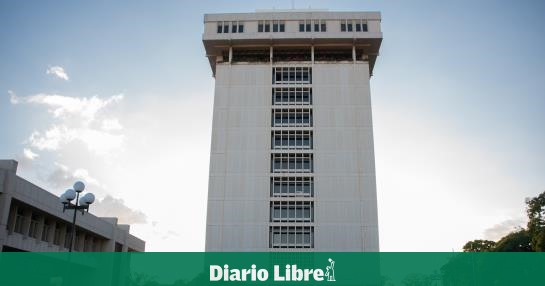Economists consider that the Central Bank’s decision to once again increase its interest rate from monetary politicsnow at 50 basis points, going from 5.00 to 5.50% per year, will have a significant impact on the country’s economic activity.
Meanwhile, the Association of Multiple Banks of the Dominican Republic (ABA) has already announced that “it definitely has a transmission channel at bank rates”, such as that of the loans new.
“As long as we have an expansive fiscal policy in terms of public spending, understood as current spending higher than current income, the Central Bank has no other alternative to contain inflationary pressure than to increase interest rate”, he explained William Caramformer Governor of the Central Bank.
He analyzed that the national budget for 2022 designed by the government, has current expenses that are 81 billion pesos higher than current income. “As of March 25, 84 days of the year, all the taxes that we Dominicans pay (210 billion pesos) were consumed in current expenses, so to amortize the debt and finance capital expenditures made, it was necessary to use 43 thousand million pesos of the loans obtained,” he said.
He indicated that, as monetary politics The contractionary policy adopted by the Central Bank “is neutralizing the expansionary fiscal policy implemented by the government, it is now up to the government to neutralize the negative effect that the increase in the interest rate in production in order to avoid a ‘slowdown’ in the growth rate of the economy that reduces the supply of goods”.
“The most expeditious way to do this is for the government to change its subsidy policy. That instead of subsidizing consumers through programs that are being fraudulently lent, it subsidizes producers by absorbing part of the increase in the interest rate”, said.
The rise in the rate monetary politics The Central Bank bases it on an “exhaustive evaluation of the behavior of the world economy, the greater persistence of inflationary pressures and the increase in international uncertainty derived from recent geopolitical conflicts.”
Likewise, the bank highlighted that “price dynamics continue to be affected by external shocks that are more permanent than expected, associated with the notable increase in oil prices and other important raw materials for local production, as well as the high costs of international container shipping and other disruptions in supply chains”.
With this decision taken at your meeting of monetary politics March, the Central Bank has increased its interest rate monetary politics by 250 basis points from November 2021, in line with the cycle of increases in interest rates at the international level.
“In the case of non-restructured financing and new credits, due to a higher cost of funding via the passive interest rate, it is expected that active rates will rise, that is, of loans”On the most recent decision of the monetary policy rate
Anthony CiriacoVice Dean of the Faculty of Economics of the Autonomous University of Santo Domingo, understands that the increase in the rate of monetary politics will continue to “make credit more expensive”. “It is going to affect private investment and private consumption and, consequently, the growth expectations of the economy are reduced and, clearly, there is a risk that the economy ends up with a growth of around 4 or 4.5 percent, which is below potential growth. I consider.
The Economist Haivanjoe Ng Cortinas He stated that the Central Bank made a decision that influences or is transmitted to the interest rates of the Dominican financial system, “thus making credit more expensive and slowing down the pace of aggregate demand in the Dominican economy.”
“However, this objective has not been achieved, since as of March 2022 the interest rate weighted average assets of the Dominican banking system is around 9.71 percent when in November 2021, when the interest rate began to rise monetary politicsthis interest rate banking was hovering around 9.79 percent,” he added.
He indicated that 0.21% has decreased in the interest rate in the country, “which means that the upward adjustment of the interest rate monetary politics so far it is not giving the expected results”.
“The Central Bank, I believe, should be contemplating new and greater measures, more intense, in order to contain Dominican inflation that continues its hectic course,” he said.
Banks say yes
The Association of Multiple Banks of the Dominican Republic highlighted that the increase in the monetary policy rate that has been operating also has a transmission channel in passive interest rates, that is, the one paid to savers and depositors . The economist Caram hopes that the Superintendence of Banks “supervises financial entities so that they spread the increase in interest rates among their depositors, so that the large number of Dominicans who live on savings they have generated trusting in the stability of the economy, can compensate for the increase in the cost of living that they are suffering.








